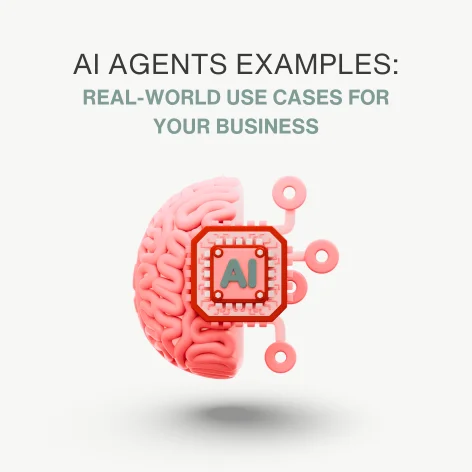The New Era of AI in 2025: From Gemini 3 to Creative AIs
Learn about the best AI tools for 2025, including Nano...
We use cookies for our website to give you the most relevant experience by remembering your preferences. By clicking “accept”, you consent to use of ALL the cookies
This website uses cookies to improve your experience while you navigate through the website. Out of these, the cookies that are categorized as necessary are stored on your browser as they are essential for the working of basic functionalities of the website. We also use third-party cookies that help us analyze and understand how you use this website. These cookies will be stored in your browser only with your consent. You also have the option to opt-out of these cookies. But opting out of some of these cookies may affect your browsing experience.
Necessary cookies are absolutely essential for the website to function properly. These cookies ensure basic functionalities and security features of the website, anonymously.
| Cookie | Duration | Description |
|---|---|---|
| cookielawinfo-checkbox-functional | 11 months | This cookie is set by GDPR Cookie Consent plugin. The cookie is used to store the user consent for the cookies in the category “Analytics”. |
| cookielawinfo-checkbox-functional | 11 months | The cookie is set by GDPR cookie consent to record the user consent for the cookies in the category “Functional”. |
| cookielawinfo-checkbox-necessary | 11 months | This cookie is set by GDPR Cookie Consent plugin. The cookies is used to store the user consent for the cookies in the category “Necessary”. |
| cookielawinfo-checkbox-others | 11 months | This cookie is set by GDPR Cookie Consent plugin. The cookie is used to store the user consent for the cookies in the category “Other. |
| cookielawinfo-checkbox-performance | 11 months | This cookie is set by GDPR Cookie Consent plugin. The cookie is used to store the user consent for the cookies in the category “Performance”. |
| viewed_cookie_policy | 11 months | The cookie is set by the GDPR Cookie Consent plugin and is used to store whether or not user has consented to the use of cookies. It does not store any personal data. |
Functional cookies help to perform certain functionalities like sharing the content of the website on social media platforms, collect feedbacks, and other third-party features.
Performance cookies are used to understand and analyze the key performance indexes of the website which helps in delivering a better user experience for the visitors.
Analytical cookies are used to understand how visitors interact with the website. These cookies help provide information on metrics the number of visitors, bounce rate, traffic source, etc.
Advertisement cookies are used to provide visitors with relevant ads and marketing campaigns. These cookies track visitors across websites and collect information to provide customized ads.
Other uncategorized cookies are those that are being analyzed and have not been classified into a category as yet.
Cyberia Tech, Inc. respects your privacy. This Privacy Policy explains how we collect, use, and share your information. By using our services, you agree to this policy. If any other agreements conflict with this Privacy Policy, the terms of those agreements prevail.
Cyberia Tech complies with the EU-US and Swiss-US Privacy Shield Frameworks for handling personal data from the EEA, UK, and Switzerland. In case of any conflict, the Privacy Shield Principles prevail. Learn more at Privacy Shield. Key Definitions
Information linked to an individual, transferred from the EEA, UK, or Switzerland to the U.S.
Data revealing race, religion, health, sexual orientation, and similar categories.
Effective Date: [ 2025 / 12 / 12 ]
Welcome to The Cyberia Tech ! By accessing or using our website or services, you agree to
comply with and be bound by these Terms of Use and our Privacy Policy. If you do not agree with
these terms, please do not use our Services.
Loading
0 %

When people look for AI agents examples, they often expect to see complex business software. My journey to understanding their power, however, didn’t start with a fully autonomous system. It started with a conversation. For the past few months, I’ve been conducting a personal experiment, using a powerful language model like ChatGPT as a creative partner to build my own fitness plan.
I guided the model, feeding it my age, gender, activity levels, and my understanding of my body’s metabolism. It was a process where I acted as the director, prompting each step. The results were surprisingly effective, creating a fitness plan that felt truly made for me.
Now, let me be crystal clear: I am not a doctor or a certified trainer, and this is not medical or fitness advice. My story is not a recommendation for anyone to follow. It was a personal exploration, undertaken with a full awareness of my own body and its limits. Anyone considering their health and fitness should always consult with a qualified human professional.
But this experiment was an eye-opener. It made me realize that if a language model is the brilliant “brain,” a true AI agent is that brain connected to hands and feet. This realization is what sparked my interest: if I could achieve this much by guiding an AI model, what could a truly autonomous agent do for our businesses?

Before we dive into more examples, it’s important to understand what an AI agent is and how it is different from AI itself. For many leaders, the core question is what are ai agents in business and how do they differ from the tools we already use? The simplest way to think of it is as a “Digital Co-worker.”
It’s helpful to make a clear distinction. Many of us use AI language models (like ChatGPT) that can generate incredible text, ideas, and plans. These are the powerful “brains.” An AI agent takes this a step further by connecting that brain to tools and giving it the self-direction it needs to act. The language model helps you write the plan; the AI agent can execute it.
An AI agent has four key qualities, all working together. Let’s use one scenario to illustrate:
Autonomy: The agent creates and executes a multi-step plan. It will autonomously search for flights across its tools, filter the results based on your budget and stored preferences, check for scheduling conflicts in your calendar, and finally present you with the top 3 options, complete with booking links.

Here are three practical ai agent use cases for business and IT today.
3. The Intelligent IT Operations Agent Managing complex cloud infrastructure is a 24/7 job. An intelligent agent can be tasked with monitoring system health. If it detects an anomaly, it can do more than just send an alert. It can run diagnostics, cross-reference the issue with a knowledge base, and even attempt a solution, like restarting a service. This reduces downtime and frees up the IT team to work on strategic initiatives.
The AI agents examples we’ve discussed aren’t just theoretical; they are built using real-world platforms. These tools generally fall into two categories:
Developer Frameworks for Custom Builds: For more complex, bespoke solutions like the Developer or IT Operations agents, developers use powerful open-source frameworks. LangChain and CrewAI are two of the most popular, providing the building blocks to create highly customized multi-agent systems.
In all of these AI agents examples, from my fitness plan to the IT operations agent, there’s a common thread: a human is still in charge. This is what we call human-AI collaboration.
My fitness plan wasn’t created autonomously; I directed the AI model with my goals and knowledge. Similarly, a developer directs the AI agent on what to build. Our role is shifting from doing all the work to directing the work, making us strategists for a team of highly efficient digital employees.
This powerful technology comes with significant challenges. These aren’t reasons to avoid AI agents, but they highlight the absolute necessity of a strategy that includes robust security, continuous monitoring, and thoughtful human oversight.
Challenge: Unpredictable Performance. Agents can sometimes fail in unexpected ways or “hallucinate” incorrect information with complete confidence. Solution: Rigorous Validation. Never blindly trust an agent’s output for critical tasks. This involves testing in sandboxed environments, building in validation steps where the agent must cite its sources, and creating a culture where human team members are empowered to review and question the AI’s conclusions.
No, ChatGPT is not an AI agent. It’s a language model that generates text in response to user input. Unlike AI agents, it doesn’t make decisions, set goals, or take independent actions, it needs you to initiate every step.
Not. A bot follows simple rules to complete repetitive tasks. An AI agent is more dynamic, it can learn, adapt, and make decisions. So while agents might behave like bots in some cases, they’re far more capable.
As these AI agents examples show, this technology is no longer theoretical. It’s here, and it’s already delivering value. For businesses everywhere, the opportunity is to start small, find one repetitive, data-driven task and explore how an AI agent could help.
The journey into AI doesn’t have to be taken alone. Understanding how to integrate these tools strategically is the first step. If you’re curious about how this technology could specifically benefit your operations, we at The Cyberia Tech are always here to explore those possibilities with you.
This is just the beginning. On a personal note, I sometimes wonder how far this could go. Could this technology extend into creative fields? Imagine a future AI agent example: a robotic arm using computer vision to perform a task as delicate and artistic as applying lash extensions. It’s a fun thought, but it shows that the only real limit is our imagination. This is the future of AI, and it’s time to be a part of it
You Can Get More Information!
